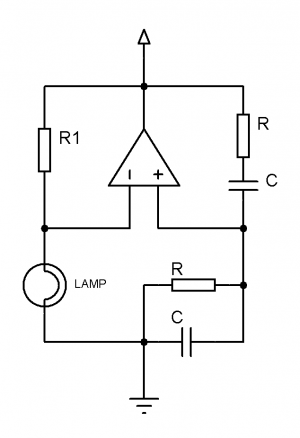Wien bridge oscillator
A Wien bridge oscillator is a type of electronic oscillator that generates sine waves. The bridge is comprised of two resistors and two capacitors and was originally developed by Max Wien in 1891.
The frequency of oscillation is given by:
- <math>f = \frac{1}{2 \pi R C}</math>
The wien bridge itself will attenuate the signal by a factor of 3 so feedback with a gain of 3 is needed to get a stable oscillation. If the gain is too high then the amplitude will rise until clipping of the signal, if the gain is too low the signal will gradually die out. Some sort of stabilisation is needed to keep the gain at the correct level.
The classic version of the circuit used an incandescent bulb to keep the gain at the correct level. When the filament increased in temperature its resistance increased and the gain was reduced until the circuit would find an equilibrium. Modern circuits commonly use FET transistors but can also use a Light Emitting Diode or other optical components for stabilisation.
